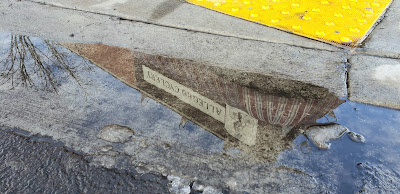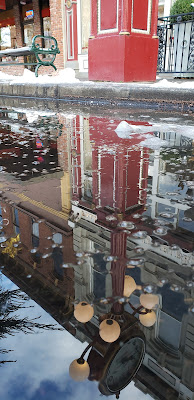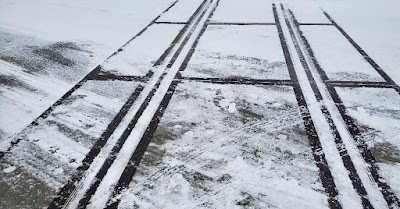The Covid-19 pandemic—like every pandemic that has plagued humanity—has turned normality akilter, brought grief where none existed, and challenged man’s capacity to be generous in adversity. What on ordinary days might seem bizarre, becomes normal: quarantining in a parent’s basement with meals left at the door like it is a prison cell, the storing of bodies jumbled in refrigerator trucks with each corpse’s existence reduced to the accuracy of its identity tag, and some men proud to wear football helmets, gun holsters, and jock straps can’t find their own courage when it comes to pulling a scrap of cloth over their mouth and nose. Mothers, unlike my own who died in the polio pandemic when I was a one-year-old (only two years before the polio vaccine was available), stand on street corners with their children in tow, all mask less, waving anti-vaxxer signs, seemingly oblivious or pretending to be oblivious to the hazard of their ill-formed campaign—politically driven and opposing the very science their child is supposedly learning in school. Yes, the bizarre normal.
The photo above of buildings in Walla Walla, Washington, certainly has an eerie feeling. The pavement appears to be clouds and the words in the water’s reflection should be reading backwards. Bizarre, yes. That I have recently taken a break from walking my familiar wooded canyon (where I wandered mostly alone these past two years) and instead spent hours walking the alleys of my hometown, peering into gutters is both bizarre and normal. Bizarre, because who walks alleys? And normal because I have become accustomed to looking for the beautiful or unusual—slow-walking through a pandemic and welcoming what comes.
On Christmas Eve day, the drive-thru lane in the alley behind Baker Boyer Bank saw a crisp business, so I dodged cars while stopping to admire the blue sky reflected in the runoff from a nearby building. I loved the authority of the white line, its certainty solid in an uncertain time.
Examine this photo. Although it could be construed as a painting, it isn’t. Pebbles embedded in an alley’s pavement read through the water of the puddle as paint blotches. The ordinarily unnoticed electrical conduits attached to the back of a building act as an artistic element, guiding the viewers eyes up and back down. I’ve passed by this spot hundreds of times and never slowed to see the beauty at my feet. This is the bounty of pandemic time.
One of my ninth great grandfathers immigrated in 1635 to Massachusetts from a village in England called Boxted. When one of the many plagues swept through the village’s borders and threatened to kill everyone, those who were not yet contagious moved a short distance and hastily built a new town they called Boxted Cross. Think on this. What if this had been the solution for Covid-19? Would Walla Walla have come to be known as Old Walla Walla, and the new “town” Walla Walla Crossed?
I appreciate that many of our old Walla Walla buildings have survived earlier catastrophes or waves of use and disuse, of people moving about for whatever reason. I enjoyed isolating these building’s beauty in a world of pooled water or windowpanes.
I haven’t shied entirely away from popping into stores.
Or walking down Main Street past its iconic clock.
On this last day of 2021, I can grieve for those whose lives were upended by this pandemic and I can hope this next year brings both a greater sensibility for and appreciation of our medical capabilities, along with a more generous consideration for the well-being of others.
Let’s all be looking for new tracks, normal ones like the railroad tracks in front of Safeway on a snowy day.
Let’s gather warmth like from the colors of alley walls and from the kindness of strangers, their eyes twinkling from above their masks. Let’s find our way back to normal.











No comments:
Post a Comment
Please leave comments. They are most welcome.